Exploring New York’s Industrial Past in "Cathedrals of Industry"
Join photographer Michael L. Horowitz for a journey through 50 years of photographs!

Discover how those giant floats get to NYC, how much helium is needed for the massive balloons, and more fascinating secrets!

We recently covered 10 fun facts about the Macy’s Thanksgiving Day Parade balloons, such as the manufacturing process behind the scenes and some of the strange design choices. Now, read about the secrets of the parade itself, including facts about the parade’s history and what really goes on behind the scenes of this spectacular annual event!
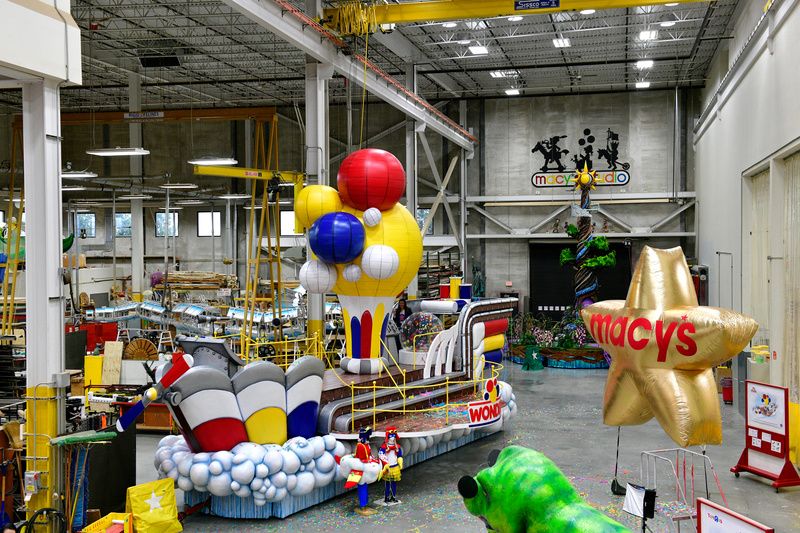
The magic of the Macy’s Thanksgiving Day Parade comes to life inside a giant warehouse in Moonachie, New Jersey. Dubbed the Macy’s Studio, the 72,000 square-foot workshop is where painters, carpenters, animators, sculptors, welders, electricians, engineers, and scenic and costume designers put in over 8,000 hours of labor to craft the floats and costumes that you’ll see on Thursday morning. According to Macy’s, quite a lot of materials go into crafting these giant floats including 2,000 gallons of paint, 300 pounds of glitter, and 200 pounds of confetti.
Once the floats are perfected, they’re partially disassembled and folded up to fit through the Lincon Tunnel on their way into Manhattan. Will Coss, Macy’s Parade Executive Producer, recently explained to ABC7 News that each float folds down a size of 12 feet by 8.5 feet, about the same size as a city bus. Once they arrive on Upper West Side, it can take 8 to 10 hours to unfold and reassemble the floats. The largest float is Santa’s sleigh which measures 60 feet long and 3.5 stories tall.
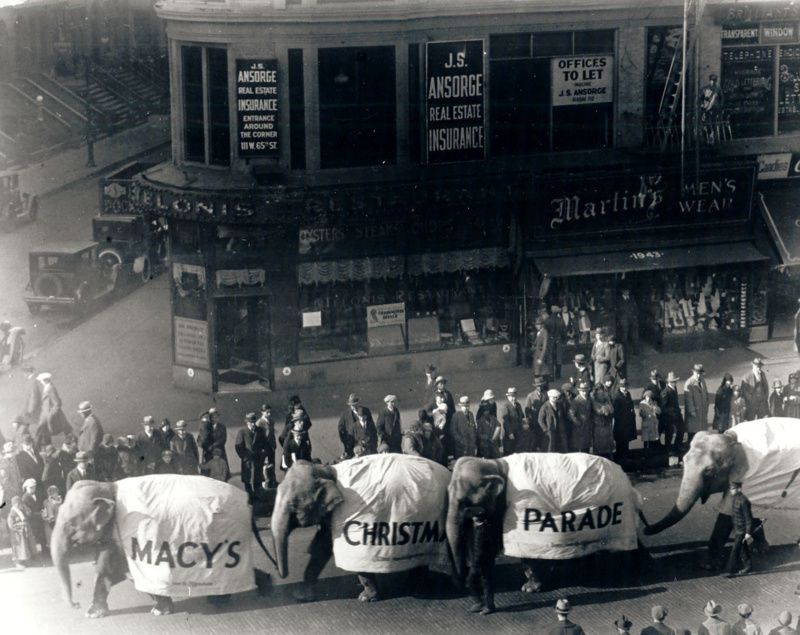
Prior to 1927, the parades were filled with real animals from the Central Park Zoo rather than balloons. These animals included bears, camels, goats, elephants, and even tigers and lions. Dealing with live animals comes with many drawbacks, especially when you are trying to get them to walk a 6-mile parade route.
Toward the end of the route, many of the animals would get rowdy, restless, and tired. The loud growls and other wild noises that the animals would make scared little children in the crowd. Finally, the earthbound creatures were hard to see as the crowds of onlookers grew each year. The solution to these problems was to replace the live animals with fake ones created by German puppeteer Tony Sarg. In 1927, Sarg was hired to develop tethered balloon floats designed to be both wide and high enough for large crowds to see from any vantage point. His creations premiered at the 1928 parade and a new tradition was born.
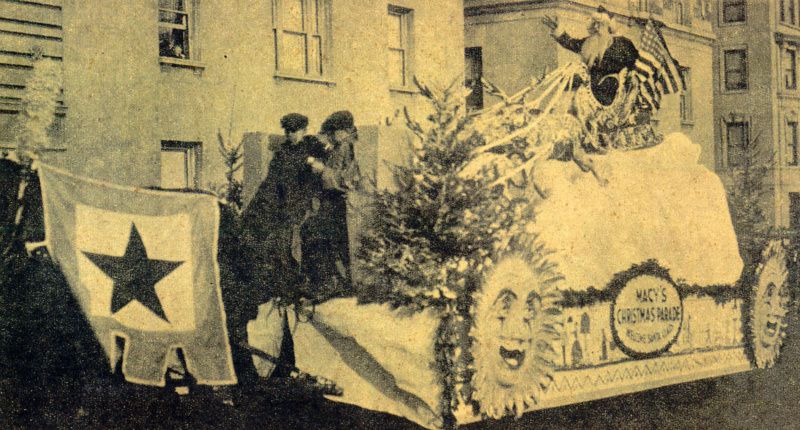
In 1924, the first “Macy’s Christmas Parade” was held on Thanksgiving Day. It was organized by a handful of Macy’s employees dressed in costumes with entertainers, floats, and Santa Claus. The goal was to celebrate the expansion of Macy’s flagship Manhattan store, which called itself “The World’s Largest Store,” and to kick off the holiday shopping season.
This parade was so successful that Macy’s decided to hold one every year. The Christmas Parade finally became a “Thanksgiving Parade” in 1932. Today, with Black Friday following Thanksgiving Day, it still marks the start of the holiday shopping season, and Santa remains a star attraction.
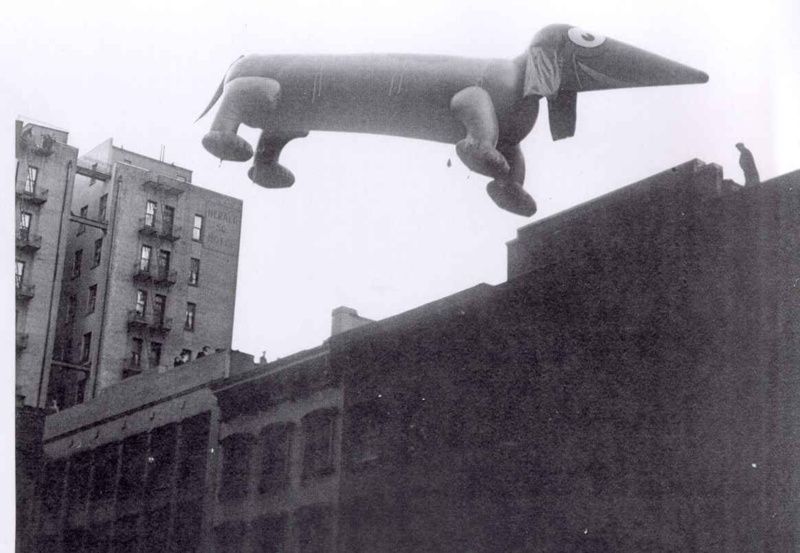
Before 1933, since the city did not have set procedures for deflating parade balloons after the parade finished, parade workers simply released the balloons into the sky at the end of the route. The balloons would then float around for about a week before falling to the ground. Attached to the balloons were tags with return instructions. If you found a deflated balloon and returned it to Macy’s, you could get a $100 reward. These free-floating balloons, unfortunately, caused many mishaps.
One year, a recently released balloon wrapped around the wing of a plane and caused it to go into a tailspin. Another hit an electric wire and was set ablaze. In another incident, a balloon came down atop a house on Long Island, inciting a tug-of-war between neighbors. In the 1930s, the practice of letting the balloons fly free was ended. Today, the balloons are deflated at the end of the route.

A hidden celestial mural in Grand Central, one of many beautiful works of art you can see at the terminal, was painted by the same artist who designed the original Macy’s Thanksgiving Day Parade balloons, Tony Sarg. The mural can be found on the ceiling of what is now Central Cellars Wine & Spirits (formerly) Grande Harvest Wines.
The space was originally part of the Grand Central Theatre. Built in 1937, the theater was targeted specifically at commuters. The screen played newsreels, documentaries, and sometimes cartoons. It was part of the terminal for three decades.
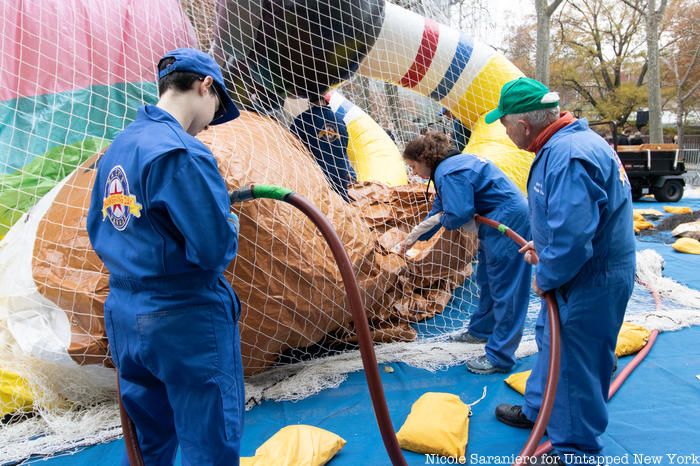
Macy’s uses an average of 12,000 cubic feet of helium per balloon (enough to fill about 2,500 bathtubs), making it the largest helium consumer after the U.S. government. To test the balloons before the parade, however, they use air rather than helium to inflate each balloon chamber. If the balloon can float for six hours, it passes the test.
Helium is a finite resource and it has many uses outside of making giant balloons float, especially in the scientific and medical fields. Macy’s has attempted various methods of recapturing and recycling the helium used in their balloons, but none have been effective yet.
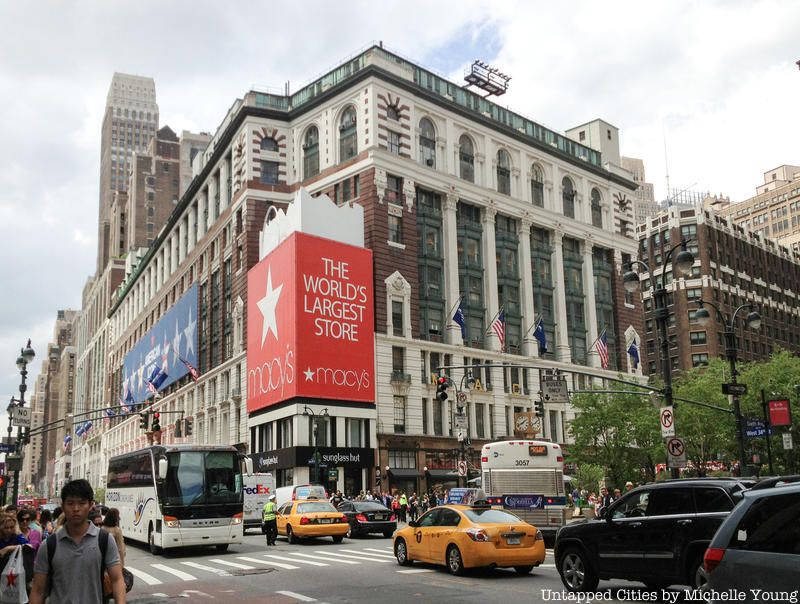
Due to rubber and helium shortages during World War II, Macy’s did not host a parade from 1942 through 1944. The company also donated balloons, which consisted of about 650 pounds of scrap rubber, to the government.
Another helium shortage threatened the parade in 1958. Instead of canceling, Macy’s to filled the balloons with air and hoisted them with trucks and cranes along the parade route that year. The parade persevered again in 2020 in the grips of the coronavirus. Instead of shutting down, there was no live audience.

From gnarly tree branches and sharp lamp posts to strong gusts of wind and even a plane, Macy’s Thanksgiving Day Parade balloons have had to endure many hazards, and they didn’t always fare too well. Since the giant helium balloons were first introduced to the parade, there have been complications.
The Macy’s team and the City of New York now have many safety procedures in place to help avoid disastrous balloon mishaps. An obvious one was stopping the practice of releasing balloons at the end of the parade. After a tragic incident in 1997, Macy’s promised to provide balloon handlers with additional training. When winds are predicted to be strong, balloons are flown at a lower altitude.
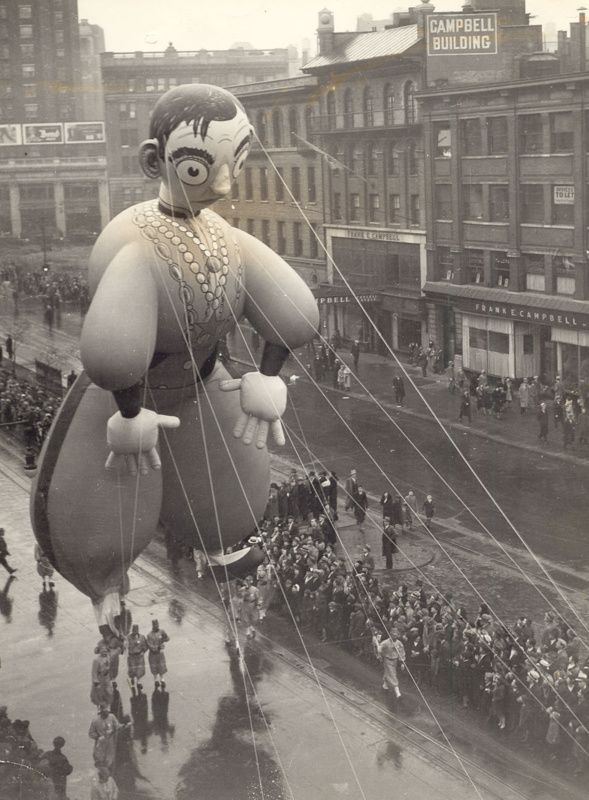
Eddie Cantor the only full-sized novelty balloon to be made in the likeness of a real person. The Marx Brothers had a novelty balloon float, but it was nowhere near as large as the Eddie Cantor balloon featured in the 1934 parade. As the AV Club puts it, the Cantor balloon had “a banjo-eyed” and “ghoulish visage” which actually scared kids, and didn’t delight them.
There have been many human characters made in balloon form since the Cantor balloon such as Ronald McDonald, Spider-Man, a generic baseball player, a fireman, and others. Still, Cantor holds the honor of being the only real-life personality crafted in balloon form.
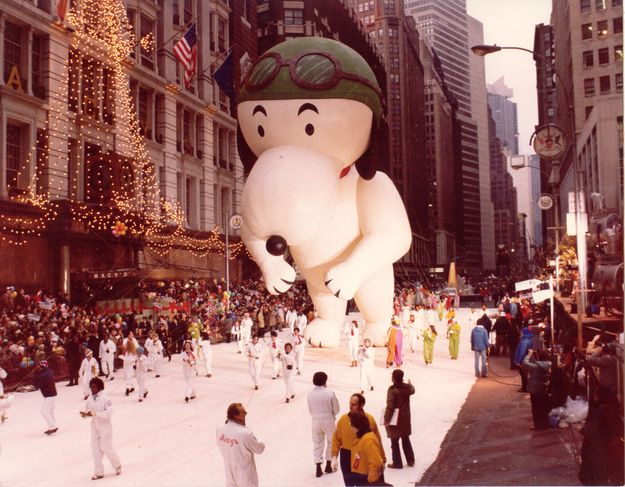
Since his debut in the 1968 Macy’s Thanksgiving Day Parade, Snoopy has appeared in over seven variations: Flying Ace Snoopy in 1968, Astronaut Snoopy in 1969, Ice Skating Snoopy in 1986, Ice Skating Snoopy with Woodstock in 1988, Millennium Snoopy in 1999, a new version of Flying Ace Snoopy in 2006, Classic Snoopy with Woodstock on his head in 2013, and a new astronaut Snoopy in 2019.
All of these different appearances have garnered Snoopy the title of the most popular giant balloon. Looks like he’s here to stay. Astronaut Snoopy will return for the 2022 parade.
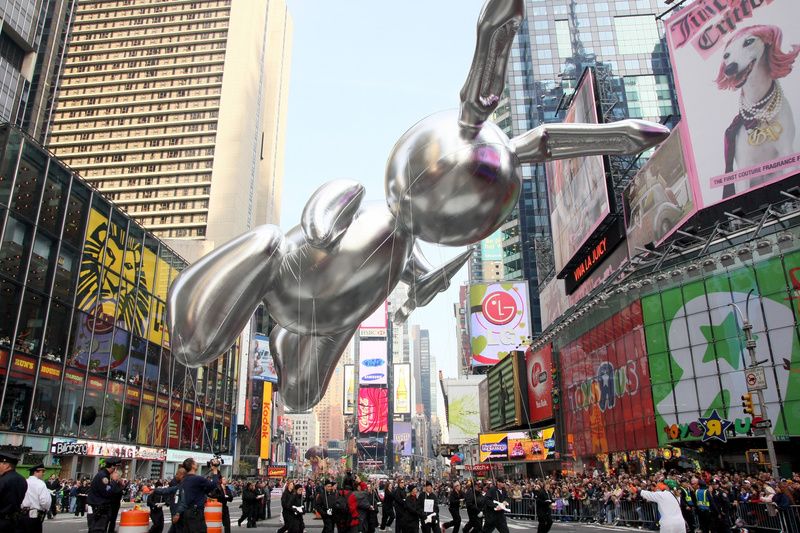
In 2011, the famous director Tim Burton designed a balloon featured in the parade that truly reflected the macabre creativity evident in his films. The balloon, called “B. Boy,” had a rather gruesome backstory. B.Boy was put together from rejected birthday party balloons left over from children’s parties at a hospital. Since he wasn’t allowed to play with other children, he went to his basement home and delved into the world of his favorite film called The Red Balloon. Like the character in the film, he hoped that he’d be able to fly high and bring joy to a small child. B. Boy received a lot of attention on social media.
At the 2019 balloon inflation, we ran into Macy’s Balloon Technician Alan Gallagher, a.k.a. Moose, who was holding a 3D-printed model of a balloon designed by Yayoi Kusama balloon titled Love Flies Up to the Sky as the real balloon was being inflated right in front of us. The 3D models are used to make the pattern for the full-size balloon. Each balloon is made up of several different pieces and chambers. Kusama is one of a long list of famous artists who have created balloons for the parade. Keith Haring had a posthumous balloon created in his honor, Tom Otterness designed a Humpty Dumpty balloon, and Jeff Koons created a metallic rabbit. Other artists who designed balloons include Takashi Murakami, KAWS, and more.
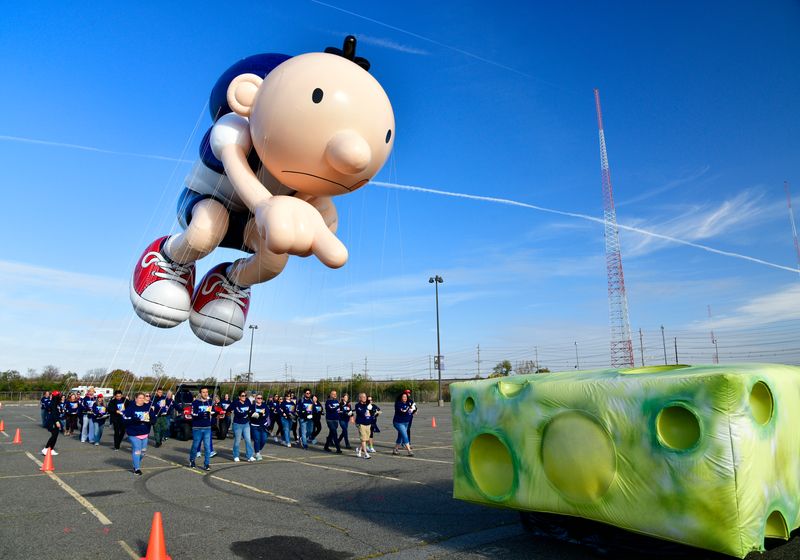
There’s no readily available application that you can fill out to be a balloon handler. Even though the position is a volunteer one, it’s highly coveted. In order to be a balloon handler, your first step is to either be a Macy’s employee or find an employee who can sponsor you. Since most handlers return year after year, there are few new spots available.
Once selected, according to Jodi Lippe-McGraw, who told her balloon-handling experience to Conde Nast Traveler in 2016, you then must go through Balloon Handling 101. You learn “the basics of aerodynamics of the balloons, rope techniques like when you let go and when you pull it tighter, how you pivot on the corner of the street, and what to do if there are wind gusts.” The piece balloon handlers hold onto, which connects to the balloon with rope, is called a “bone.” On the day of, hold on tight, smile, and listen to your balloon pilot!
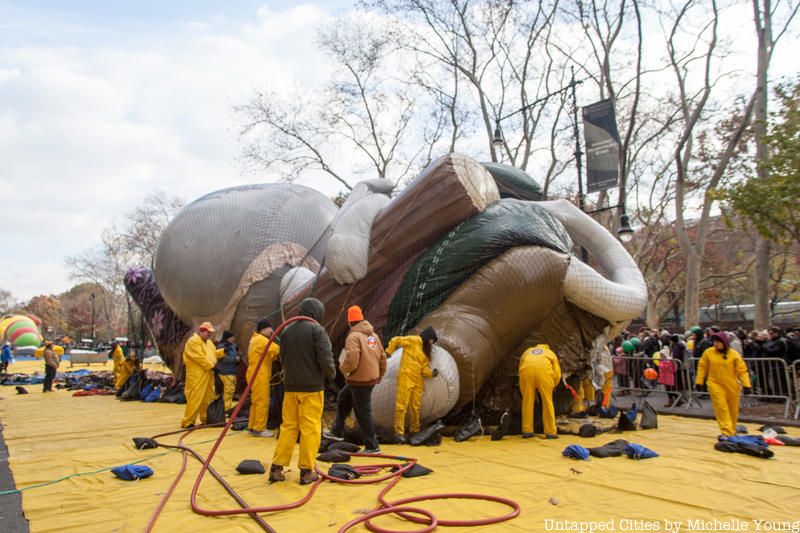
All of the giant balloons and “balloonicles” get inflated the day before the parade and you can watch as they take shape! The event usually takes place between noon and 6 PM ET, with the balloons really starting to look like something around 3 PM. You can watch as teams of jumpsuited inflation technicians transform the ballons from wrinkly piles to your favorite characters.
For 2022, you can enter the line Spectators may enter the queue at West 72nd Street and Columbus Avenue. The viewing area wraps around the Museum of Natural History and the exit is at West 82nd Street and Central Park West.
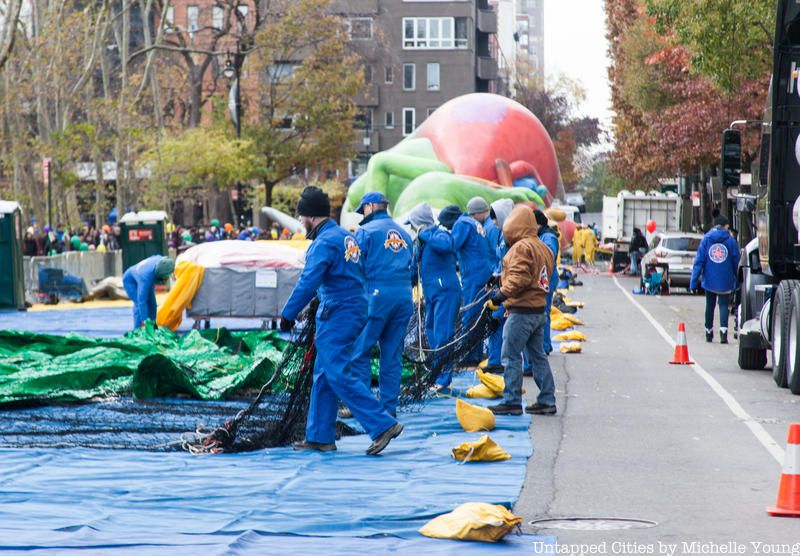
Though the parade itself only takes place once a year, it takes about 10,000 people to make the parade happen. The people in charge of the parade’s production are actually full-time employees. There are several kinds of tasks that must be fulfilled for the parade: a flight management team consisting of a pilot, two co-pilots, a captain, two assistant captains, and people to control the balloon’s vehicle are needed for each balloon. There are also inflation teams who blow up the balloons the night before the parade.
Aside from the physical maintenance of the balloons, much effort is put into researching each balloon and planning each one’s creation. The parade also requires the talents of several engineers who analyze each balloon and test the effects of different wind speeds and heights on its ability to stay on its path. This doesn’t mean that accidents don’t happen, but many safety measures have arisen from the mistakes. Finally, for the actual parade, the balloon handlers dress in costumes that match their balloon. And it takes about a month to launder these clothes, and another to package them.
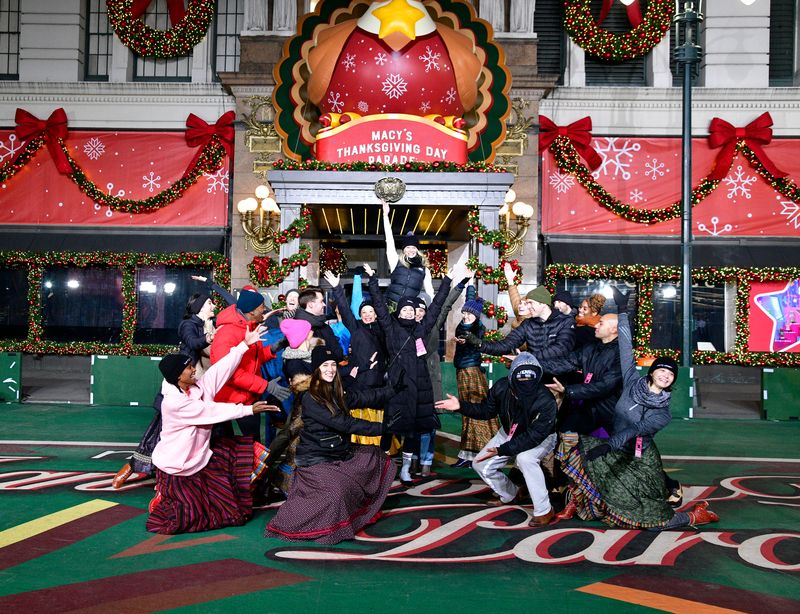
For almost half a century, Broadway performances have been part of Macy’s Thanksgiving Day Parade, but that wasn’t always the case. While there have always been performers of some sort, like clowns and marching bands, Broadway stars didn’t join the festivities until 1977. Since then, casts from iconic musicals like The Lion King, Funny Girl, and Moulin Rouge have graced the streets in front of Macy’s.
This article was originally written by Stephanie Greier and updated in November 2022 by Nicole Saraniero
This post contains affiliate links, which means Untapped New York earns a commission. There is no extra cost to you and the commissions earned help support our mission of independent journalism!
Subscribe to our newsletter